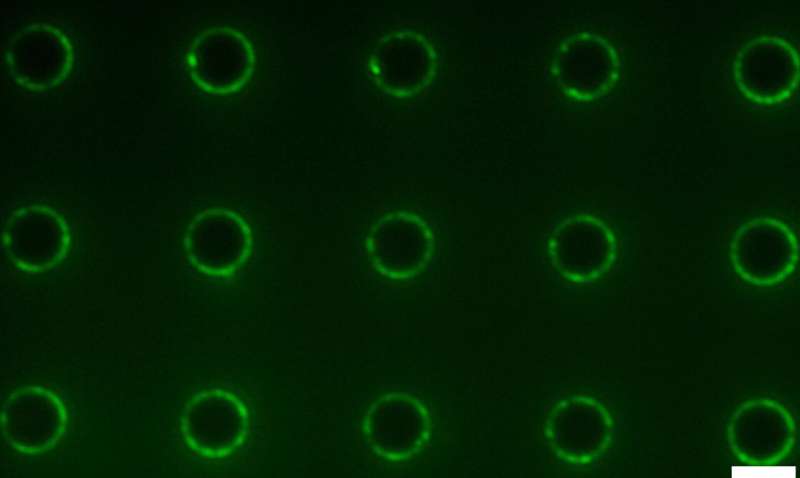Phys.org November 3, 2022
Current detection methods can only respond to changes in a droplet’s bulk wetting properties, leading to poor detection limits. A team of researchers in the US (Harvard University, Ohio State University) has developed a design principle that overcomes this fundamental limitation by locally concentrating analytes within a droplet’s contact line to modulate the local surface roughness, which further affects droplet mobility. They designed surfaces enabled the ultrasensitive, naked-eye detection of amphiphiles through changes in the droplets’ sliding angles, even when the concentration is four to five orders of magnitude below their critical micelle concentration. They developed a thermodynamic model to explain the partitioning of amphiphiles at the contact line. Based on this local analyte concentrating effect, we showcase laboratory-on-a-chip surfaces with positionally dependent pinning forces capable of both detecting industrially and biologically relevant amphiphiles…read more. TECHNICAL ARTICLE

Fluorescence image of amphiphiles concentrated at the edges of micropillars on a microstructured surface. Credit: Aizenberg Lab/Harvard SEAS